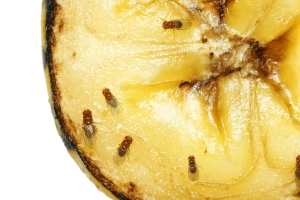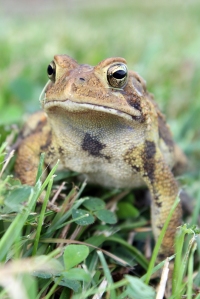Q. What’s a natural way to get rid of fruit flies?
A. Let’s dig a little bit first. Everyone has encountered fruit flies at some point in their life. We typically find them in a residential kitchen, bar, restaurant, etc. What’s the common connection there? We don’t typically find fruit in bars, so why the fruit flies?
The Common fruit fly, Drosophila melanogaster, belongs to the Drosophilidae family, along with about 4,000 other species. Adults are 3-4 mm long and can vary in color from brown to tan. They commonly have red eyes, but they can be darker. A large majority of the larvae of these 4,000 species share the same important food source…rotting vegetable matter that is undergoing fermentation. This fermentation is caused by bacterial or yeast contamination. Combine this rotting organic matter with standing water and you have a perfect environment for fruit flies.
What’s the best way to get rid of fruit flies? Sanitation. Removing their food and moisture source is far more effective than any chemical application or cup of vinegar on the counter. Fruit flies can enter a structure through open doors and windows or can be brought in on a product shipment or a batch of fruit. Commonly, fruit flies have already laid their eggs on the fruit before you bought it. The eggs hatch as the fruit ripens and the life cycle begins again. Keeping fruit in the refrigerator will keep fruit flies from becoming a problem. Immediately compost any infested fruit to prevent any further infestation of the structure.
We also commonly find fruit flies in uncleaned drains and disposals. This is also where sanitation comes into play. Frequently clean out your drains by using a microbial based drain product, like Invade BioFoam or an injection system. These microbial products actually consume the fats, oils, and grease in drains and reduce those conditions that are conducive to fruit fly breeding. You can also apply them in cracks and crevices, like grout lines, to reduce the organic matter and keep these areas free from fruit flies.
If you have any questions please feel free to ask and I’ll do my best to answer them.





 Hi, I'm Sean. This site is your resource for alternative ideas and approaches on pest control. If you want to know more about me or this site
Hi, I'm Sean. This site is your resource for alternative ideas and approaches on pest control. If you want to know more about me or this site